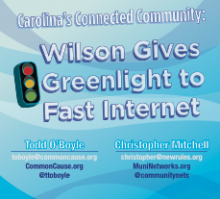New Case Study of Leverett, Mass, Muni Network
We first reported on Leverett in the spring of 2012. Leverett, a small town of 2,000, also attracted Susan Crawford's attention. Crawford and Robyn Mohr recently wrote a case study on the community's efforts to build its own fiber network. The Berkman Center for Internet & Society released the paper on December 16, 2013.
Readers will remember that Leverett, tired of being dismissed by large providers, decided to build a FTTH network to each home in town. Construction of the network, funded by a modest tax increase, is now underway.
The report, Bringing Municipal High-Speed Internet Access to Leverett, Massachusetts offers these main findings, as reported on Crawford's blog:
LeverettNet is a last-mile fiber to the home network that will be operated by a publicly controlled Municipal Light Plant entity. The MLP will operate independently of Leverett’s political infrastructure, but will be required by state law to charge subscribers no more than the cost of providing service.
The network will connect every household in Leverett. Although every residence and business will be linked to LeverettNet, individual homeowners will have the discretion to decide whether to subscribe.
LeverettNet was planned to take advantage of MassBroadband 123, a publicly funded fiber network recently built to connect towns (but not individual homes and businesses) in Massachusetts.
Long-term leadership, planning, and community engagement by Leverett’s public officials prompted the citizens of Leverett to approve a modest property tax increase in return for the long-term benefits of a FTTH network.


